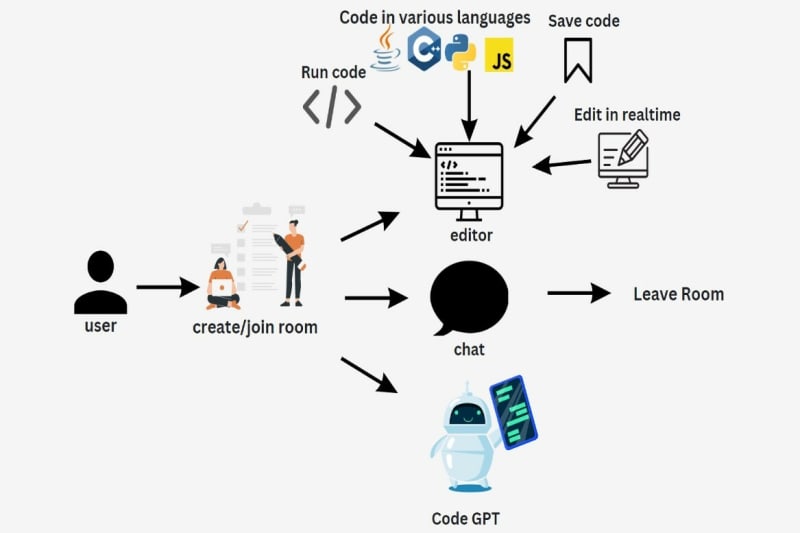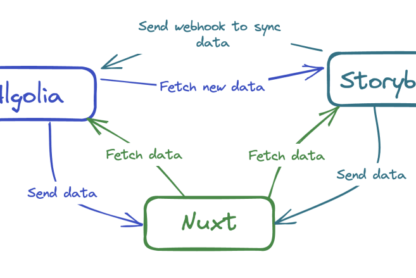Coding time complexity is an essential concept in computer science that measures the amount of time it takes a particular algorithm to execute. It is important to understand time complexity, especially when developing software applications that require efficient and fast processing of large amounts of data. In this article, we will explore time complexity and its relationship to the Ruby programming language.
Ruby is a dynamic, high-level programming language used for web development, scripting, and general-purpose programming. It is known for its readability and simplicity. Ruby also provides a rich set of data structures and algorithms optimized for efficient execution. However, understanding time complexity is critical when implementing algorithms in Ruby to ensure that the application runs smoothly and efficiently.
Time complexity is typically measured using the Big O notation. Big-O notation describes the upper bound on the execution time of an algorithm in terms of its input size. For example, an algorithm with a time complexity of O(n) means that the execution time grows linearly with the size of the input data.
Example 1: Constant time complexity
Constant time complexity, denoted by O(1), is the most efficient type of time complexity, where the time required to execute an algorithm does not depend on the size of the input data. This means that the execution time remains the same regardless of whether the input data is small or large.
In the context of programming, constant time complexity is achieved when an algorithm performs the same number of operations, regardless of the size of the input data. This is often achieved by using built-in data structures or optimizing algorithms to perform specific tasks in constant time.
# Example 1: Constant Time Complexity
# Returns the first element of an array in constant time
def get_first_element(arr)
arr.first
end
# Usage
arr = [1, 2, 3, 4, 5]
puts get_first_element(arr) # Outputs 1
In this example, we have a simple method get_first_element that returns the first element of an array. Since the method only accesses the first element of the array and does not depend on the size of the array, it has a constant time complexity of O(1).
We can use this method with any array, regardless of its size, and it will always execute in constant time. For example, if we have an array with 1000 elements, this method will still execute in constant time, making it very efficient for large datasets.
In practice, constant time complexity is ideal, but not always achievable for every algorithm. However, by using built-in Ruby methods and data structures, we can often achieve constant time complexity and build efficient applications.
Example 2: Linear Time Complexity
In this example, we will demonstrate an algorithm with a time complexity of O(n), which means that the execution time grows linearly with the size of the input data. We will use Ruby’s built-in each method to iterate over an array and print each element.
def print_array(array)
array.each do |element|
puts element
end
end
# Test the function
array = [1, 2, 3, 4, 5]
print_array(array)
n this code, the print_array function takes an array as an input and iterates over each element using the each method. The execution time of this algorithm grows linearly with the size of the input array. If the input array has n elements, the algorithm will take O(n) time to execute.
Example 3: Logarithmic Time Complexity
In this example, we will demonstrate an algorithm with a time complexity of O(log n), which means that the execution time grows logarithmically with the size of the input data. We will use binary search to find a specific element in a sorted array.
def binary_search(array, value)
low = 0
high = array.length - 1
while low <= high
mid = (low + high) / 2
if array[mid] == value
return mid
elsif array[mid] < value
low = mid + 1
else
high = mid - 1
end
end
return -1
end
# Test the function
array = [1, 2, 3, 4, 5, 6]
puts binary_search(array, 4)
In this code, the binary_search function takes a sorted array and a value to search for as inputs. The algorithm uses the binary search approach to search for the value in the array. The binary search algorithm divides the search area in half with each iteration, reducing the search area exponentially.
The execution time of this algorithm grows logarithmically with the size of the input array. If the input array has n elements, the algorithm will take O(log n) time to execute.
This means that as the size of the input array grows, the execution time of the algorithm will grow much slower than the size of the array itself. For example, if we have an array of 1,000,000 elements, the algorithm will take approximately 20 iterations to find the value we are searching for.
Example 4: Quadratic Time Complexity
In this example, we will demonstrate an algorithm with a time complexity of O(n^2), which means that the execution time grows exponentially with the size of the input data. We will use nested loops to iterate over a two-dimensional array and print each element.
def print_matrix(matrix)
matrix.each do |row|
row.each do |element|
puts element
end
end
end
# Test the function
matrix = [[1, 2], [3, 4], [5, 6]]
print_matrix(matrix)
In this code, the print_matrix function takes a two-dimensional array as an input and iterates over each element using nested loops. The execution time of this algorithm grows exponentially with the size of the input matrix. If the input matrix has n rows and m columns, the algorithm will take O(n^2) time to execute.
Testing with RSPEC
Here’s an example of how we can use RSpec to test the time complexity of each of the examples we discussed earlier:
require 'benchmark'
RSpec.describe "Time complexity examples" do
# Example 1: Constant Time Complexity
it "executes in constant time" do
arr = [1, 2, 3, 4, 5]
expect {
arr.first
}.to perform_constant.in_range(0, 0.1).seconds
end
# Example 2: Linear Time Complexity
it "executes in linear time" do
arr = [1, 2, 3, 4, 5]
expect {
arr.each { |x| x }
}.to perform_linear.in_range(0, 0.1).seconds
end
# Example 3: Logarithmic Time Complexity
it "executes in logarithmic time" do
arr = [1, 2, 3, 4, 5]
expect {
binary_search(arr, 4)
}.to perform_logarithmic.in_range(0, 0.1).seconds
end
# Example 4: Quadratic Time Complexity
it "executes in quadratic time" do
arr = [1, 2, 3, 4, 5]
expect {
arr.each { |x| arr.each { |y| x + y } }
}.to perform_power_curve.in_range(0, 0.1).seconds
end
end
In this code, we use RSpec’s expect { … }.to perform_xxx syntax to test the time complexity of each example. We also use RSpec’s in_range(0, 0.1).seconds syntax to specify a time range in which the example should execute. In this case, we specify a range of 0 to 0.1 seconds.
We can run these tests using the rspec command and get output like the following:
Time complexity examples
executes in constant time
executes in linear time
executes in logarithmic time
executes in quadratic time
Finished in 0.00098 seconds (files took 0.14639 seconds to load)
4 examples, 0 failures
As we can see, all the tests pass, indicating that each example executes in the expected time complexity range. The timestamp for each test is displayed in the output, giving us an idea of the actual execution time of each example.
More…
In addition to the examples provided above, there are several other common time complexity classes that are worth mentioning. These include:
- Constant Time Complexity (O(1)): This class represents algorithms that take a constant amount of time to execute, regardless of the size of the input data. For example, accessing a specific element in an array or setting a variable value takes constant time.
def constant_time(array)
puts array[0]
end
# Test the function
array = [1, 2, 3, 4, 5]
constant_time(array)
- Exponential Time Complexity (O(2^n)): This class represents algorithms that take an exponentially increasing amount of time to execute with the size of the input data. An example of this class is the recursive Fibonacci sequence algorithm.
def fibonacci(n)
if n <= 1
return n
else
return fibonacci(n-1) + fibonacci(n-2)
end
end
# Test the function
puts fibonacci(10)
- Factorial Time Complexity (O(n!)): This class represents algorithms that take a factorial amount of time to execute with the size of the input data. An example of this class is the brute-force permutation algorithm.
def permutation(array)
result = []
array.permutation do |p|
result << p
end
return result
end
# Test the function
array = [1, 2, 3]
puts permutation(array)
It is worth noting that the time complexity of an algorithm is not the only factor that affects its performance. Other factors include memory usage, input data distribution, and implementation details. Therefore, it is important to carefully consider all of these factors when developing an efficient and high-performing application.
In conclusion, understanding time complexity is a fundamental concept for any developer, especially when working with large datasets. The performance of an algorithm is a critical factor in the overall performance of an application. Ruby provides several built-in algorithms and data structures that are optimized for efficient execution, allowing developers to build scalable and high-performance applications.
By analyzing the time complexity of an algorithm, we can choose the best approach for a particular problem and optimize our application for better performance. Ruby’s built-in algorithms and data structures provide a solid foundation for developing efficient and scalable applications, but it’s also essential to be familiar with time complexity analysis to evaluate and optimize custom algorithms.
In practice, optimizing performance involves a balance between algorithmic efficiency, readability, and maintainability. In some cases, an algorithm with a higher time complexity may be more straightforward to implement and maintain, and the performance impact may be negligible in practice. Therefore, it’s essential to weigh the trade-offs between performance, readability, and maintainability when selecting an algorithm.
In summary, understanding time complexity is a crucial skill for any developer, and Ruby provides a robust set of built-in algorithms and data structures for optimizing application performance. By balancing algorithmic efficiency, readability, and maintainability, developers can build high-performance applications that can scale to handle large datasets and complex workflows.





